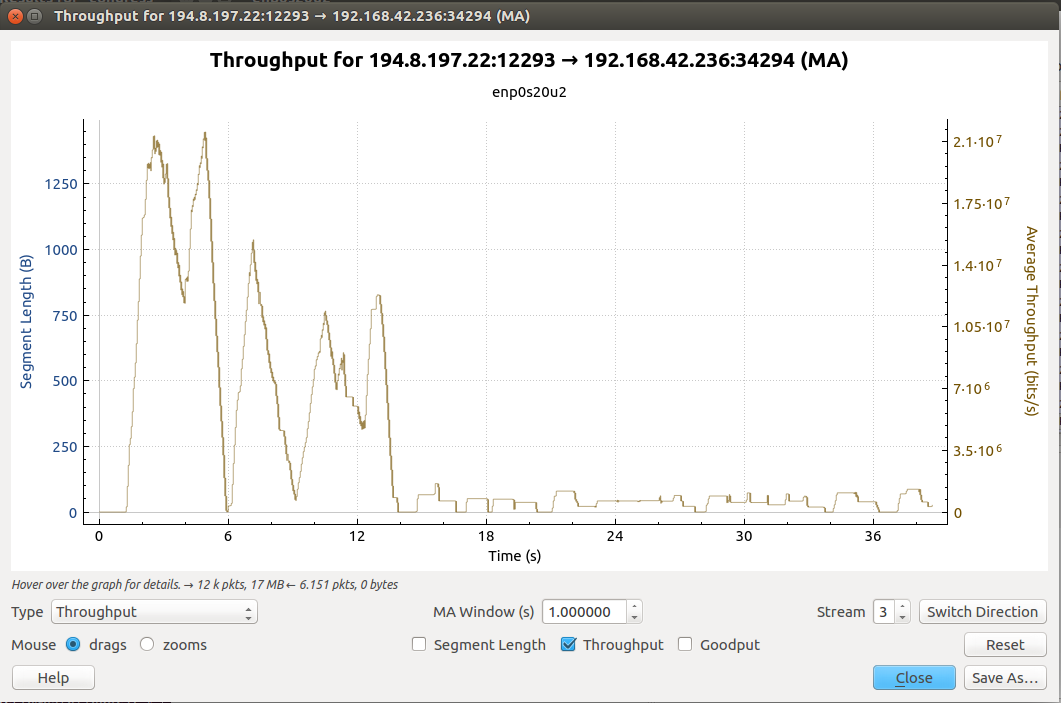When I recently flew from Europe to the US with Delta Airlines I was quite positively surprised about the Internet access that was offered on board. Over recent years, I noticed that Internet connectivity in the air significantly slowed down to a point where it is almost unusable. On this flight however, I could browse the Internet just fine and get a lot of stuff done for which I needed to be online. However, I noticed an interesting traffic shaping method that made downloading larger files impossible.
Delta uses Gogo’s inflight Internet system that uses satellites over the Atlantic. There are different variants available and I am not quite sure which one was used on my flight. The graph above shows its capabilities and the traffic shaping used to prevent larger file downloads from hogging bandwidth. At the beginning of a TCP connection, throughput was around 20 Mbit/s for around 10 seconds into the data transfer. After that the connection was throttled down to just a few hundred kilobits a second for the remainder of the transmission.
This means that most web pages will download just fine and that the throttling is only encountered when a larger amount of data is transferred. I guess that also impacts video streaming but I didn’t give it tray. Also, I noticed that the inflight network wasn’t treating my UDP based OpenVPN tunnels very nicely, the tunnel would stop working after a few seconds. Even TCP based VPN systems will probably not have a good time with this if they use a single TCP stream for everything, as all data is throttled evenly and there is no ‘boost’ at the beginning of a new TCP connection inside the tunnel. That’s not good news for business travelers but probably good for all other people on board the plane as gigabytes of background software updates do not saturate the link.
